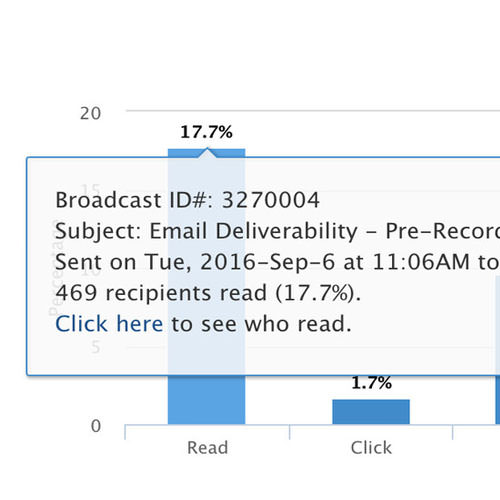Email Marketing
Email marketing is the use of email to communicate a message to a large group of people. To effectively use email as a tool for marketing, the successful marketer must understand how it works and follow the rules of engagement. Failure to comply with these rules will result in poor delivery, or worse, getting blacklisted.
Lars Helgeson discusses email marketing fireside
Rule #1 - Do Not Spam
Spam has been around since the early days of the Internet once people realized it was easy and cheap to get a message into a lot of inboxes. As a result, the email inbox providers became better and better at filtering out the junk that people didn't want to receive. Technologies have sprung up to ensure your message gets in the inbox, but first, you must abide by the general rule of not sending messages to people who didn't ask for them. This means don't buy lists, and be very careful sending to old lists of people who won't remember you.
Rule #2 - Don't use a webmail address
If you're sending a lot of emails from your gmail.com, yahoo.com, or hotmail.com address, you won't get many through. Not only does this reflect poorly on your business presence (if you can't afford to set up your own domain, are you really a legitimate business?), most email servers will reject your email.
Rule #3 - Use a reputable email service provider (ESP)
Some email service providers can be difficult to use, provide limited statistics, or have poor delivery rates. On the contrary, There are a number of established, proven companies you can use to send your emails. These companies will provide a way upload a list of contacts, design your email, send your messages, and track who opened, clicked, bounced, or unsubscribed. Companies like GreenRope and EmailGreen are examples of ESPs which can accomplish everything you would need from email marketing technology.
Rule #4 - Set up your DNS for DKIM and SPF
DKIM and SPF are two technologies you will need to ensure that your messages get delivered to the inbox, and not filtered into the junk folder. Be sure to work with your ESP to ensure that your DNS records are appropriately updated with these entries.
Rule #5 - Send useful information
People don't like to be sold to directly by email. Unless there's a financial incentive (like a discount or limited time offer you know your recipients will want), be sure to include educational information. Any helpful or beneficial materials will build a relationship.
Rule #6 - Design for simplicity and responsiveness
When you build an email, focus on conveying your message in simple, concise language. If you want a call to action to drive recipients to do something, make it obvious. In the design of your messages, be sure your ESP supports responsive emails, which will render your messages nicely on computers, tablets, and phones.
Rule #7 - Pay attention to your tracking data
Your ESP will automatically manage bounces (non-deliverable email) and unsubscribes (when someone says they don't want any more email from you). Other useful data will help you figure out what works and doesn't work. Pay attention to open rates (what percentage of people load images in your email) and click rates (what percentage of people click on links).
Rule #8 - Get email marketing data into your CRM
Your email marketing performance should not just live inside your email program. Be sure you can get the data into your CRM, so your sales team can benefit from the information you're gathering. A highly interested newsletter recipient may help a salesperson convert a lead to a client at the perfect time.
Rule #9 - Connect to a marketing automation platform
Email marketing that is connected to your contacts' behavior is the next level in email marketing. If you can send a lead relevant, personalized information by email when they do something, you're likely to get better engagement. This feature is often included in a good marketing automation platform. Look for platforms that can trigger email sending based on filling out forms, visiting webpages, answering surveys, or other key behaviors.


